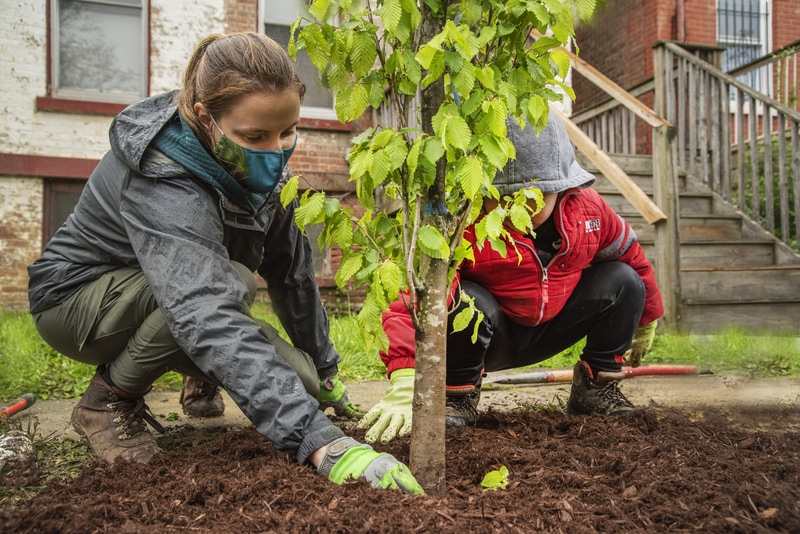Reducing Crime By Greening Streets

A recent New York Times op-ed by Eugenia South, director of the University of Pennsylvania’s Urban Health Lab, noted that most efforts to curb gun violence focus on the people most likely to commit crime and their victims. While she calls these strategies “important and necessary,” South argues that they’re not enough. “Missing from the plan,” she writes, “is a focused investment in the high-risk places that allow violence to thrive.”
“In large cities, a small number of streets account for an outsize number of violent crimes,” South continues. “Those streets are usually in segregated Black neighborhoods that, because of structural racism, have suffered from decades of disinvestment and physical and economic decline.”
Reducing crime by greening and leafing out
Teaming up with the Pennsylvania Horticultural Society (PHS), the Urban Health Lab conducted several studies in Philadelphia to determine the long-term values of greening and cleaning up neighborhoods where gun crimes are prevalent. The results were astonishing: In streets surrounding the vacant lots where they removed trash and planted trees, violent crimes fell up to 29 percent. And by all indications, it did not migrate elsewhere.
Leafing out neighborhoods is another way to help curb gun violence. Also in Philadelphia, Michelle Kondo, a research social scientist with the U.S. Forest Service, spearheaded a study (published in the American Journal of Epidemiology) indicating an astonishing inverse relationship between street trees and violent crime. The data show that people in neighborhoods with tree cover were 30% less likely to be assaulted. “And of course,” adds Kondo, “having more trees could have other benefits as well, including keeping areas of the city cooler during summer months.”
Engaging and involving the neighborhood
The PHS is playing a leading role in reaching Philadelphia’s goal of expanding the city’s tree canopy from 20% to 30%. Its volunteers plant up to 1,000 trees each year. Planting locations are prioritized according to two factors: neighborhoods lacking tree cover and places where crime rates are above average. The PHS also established Tree Tenders, a program that trains residents to care for new trees on their streets, encouraging neighborhood engagement and participation.
Interestingly, a study in the International Journal of Environmental Research and Public Health shows that creating green spaces alone won’t necessarily curb gun violence — the spaces must be well-designed and maintained.
“Design is really important,” says study contributor Naomi Sachs, an assistant professor of Landscape Architecture at the University of Maryland. “Using techniques like lighting, trash cans, proper maintenance, clear visibility, clear boundaries, and other CPTED [Crime Prevention through Environmental Design] tenets that people have found to be successful in parks and other public green spaces is very valuable.”
“In and of itself, reconnecting city neighborhoods with nature will not stem the tide of gun violence,” says Corey Allen, Neighborhood Revitalization coordinator at Habitat for Humanity of Greater Newburgh. “However, it can be part of the solution, which is why it’s important to work in a manner where we support the efforts of local community members to make city streets and parks safer for neighbors to enjoy.”
Through the fruits of our partnerships in the valley’s river cities — planting street trees in Newburgh, establishing an urban farm and restoring city parks in Poughkeepsie, and engaging the Kingston community to share its vision for the new Hudson Cliffs State Park — Scenic Hudson is committed to carrying out this vital work.
Stay safe and stay strong,


